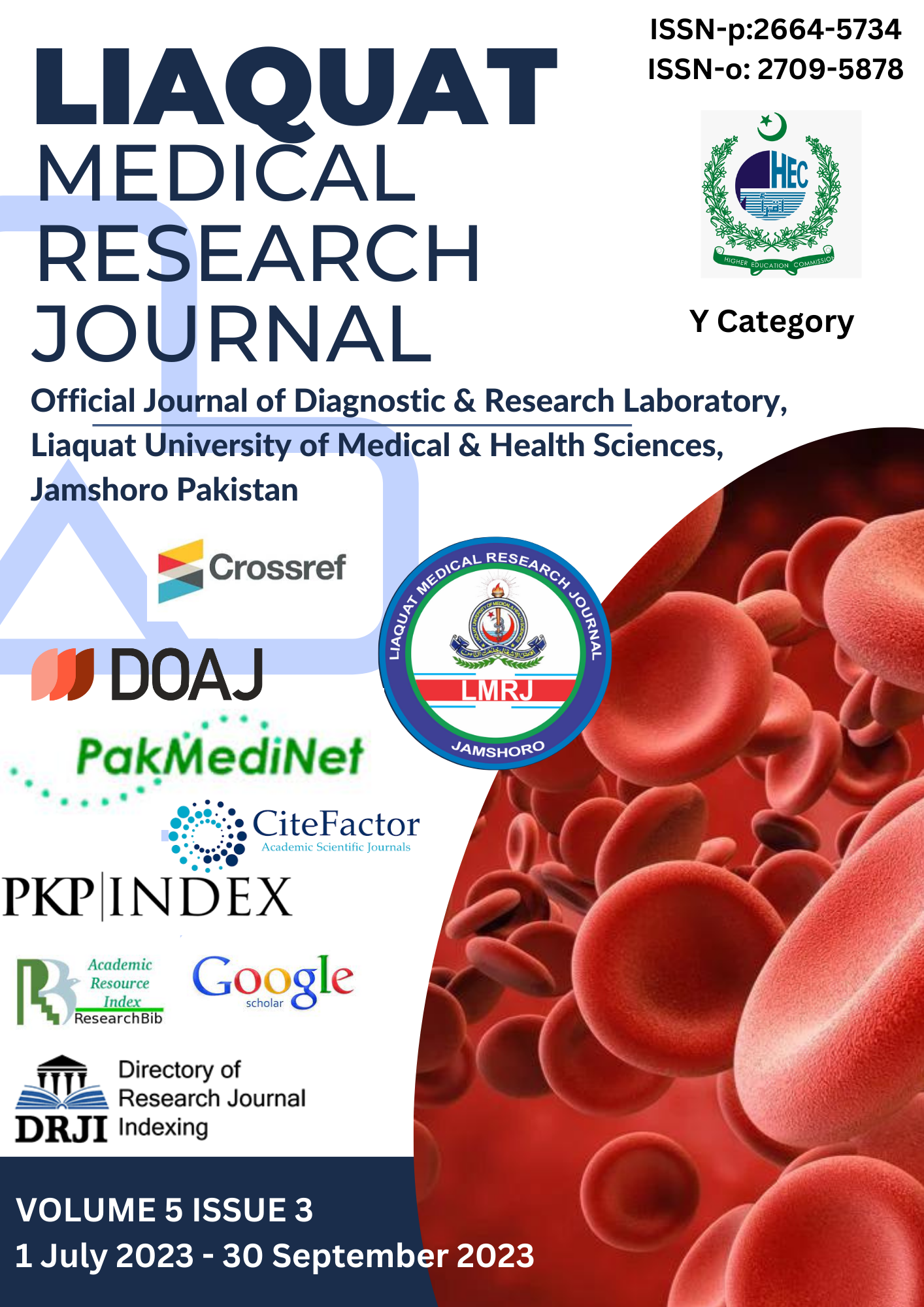Assessment of anti-malarial potential of Allium Sativum against plasmodium vivax
DOI:
https://doi.org/10.38106/LMRJ.2023.5.3-02Keywords:
Plasmodium vivax Allium sativum¸ Parasite, Antimalarial activity, methanolic extract, in vitro.Abstract
Malaria is a vector-borne protozoal disease, caused by genus Plasmodium, where female anopheles’ mosquito works as a vector to transfer malarial parasite. The disease has been reported to be endemic in tropical and subtropical regions of the world. Since drug resistance of the Plasmodium species and economic burden of the disease are the major concerns associated with malaria. Thus, most of the world’s population is focusing on the utilization of medicinal plants as the natural treatment for several diseases including malaria. There is limited published data available regarding anti-malarial activity of Allium sativum against Plasmodium vivax. Therefore, this study was aimed to assess the in-vitro anti-malarial activity of Allium sativum methanolic extract. The methanolic extract of Allium sativum showed significant anti-plasmodial activity (80.57%) at 0.2 mg/ml highest tested dose after 24h. The phytochemical analysis showed the presence of Flavonoids, Vinyldithiins, Ajoenes, Alliin and Allicin in the Allium sativum methanolic extract. Among the phytochemicals, only Allicin at the highest tested dose (0.2mg/ml) showed the inhibition (59.75%) of P. vivax inhibition. Allium sativum methanolic extract exhibits anti-plasmodial activities in-vitro. However, further studies are required to assess the in-vivo anti-plasmodial activity of Allium sativum methanolic extract against plasmodium vivax in future.

Downloads
Published
How to Cite
Issue
Section
License
Copyright (c) 2023 Dr. Fahim Ullah Khan, Laiq Zaman Zaman, Autif Hussain Mangi Mangi, Mir Sadiq Shah Shah, Saira Abbas, Jamil Ur Rehman, Zaib Un Nisa, Zahid Rehman, Batab Khan, Ishfaq Ahmad, Khalid Wahab, Maria Niazi, Sabqat Ullah

This work is licensed under a Creative Commons Attribution-NonCommercial-NoDerivatives 4.0 International License.
Copyright: Open access journal copyright lies with authors and protected under CC BY-NC-ND 4.0 licence (https://creativecommons.org/licenses/by-nc-nd/4.0/).









